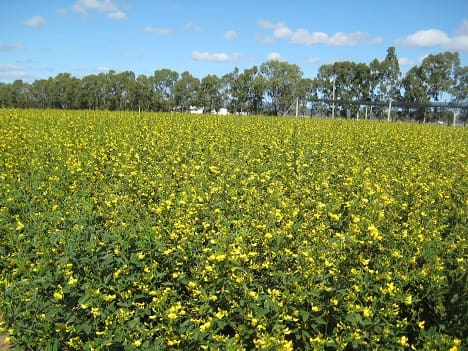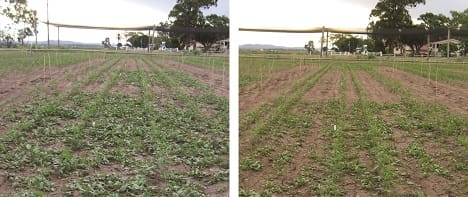
Narrow row spacing (25cm) and sequential herbicide applications provides effective weed control that preserves yield in pigeonpea.
PIGEONPEA might not be well known in Australia, but there are more than a billion people in Asia and Africa who eat this dried grain legume in a variety of dishes, and global demand is high.
This demand is driving renewed interest in the crop, which was introduced to Australia in the 1970s but never developed into commercial production.
In fact, it has only been grown as a trap-crop to monitor the incidence of Helicoverpa armigera (pod borer or bollworm) in Bt cotton crops.
As an emerging crop of importance to the grains and livestock industries, researchers have begun the task of investigating the agronomic requirements of pigeonpea in the Australian environment.
Leading the way on the weed management front are researchers Gulshan Mahajan, Rao C. N. Rachaputi and Bhagirath Chauhan from the Queensland Alliance for Agriculture and Food Innovation (QAAFI), The University of Queensland at Gatton.
“Pigeonpea is of interest because it is a drought and heat-tolerant summer legume, and provides both grain for human consumption and high quality fodder for livestock,” Dr Bhagirath Chauhan said.
“It’s slow growth habit is a significant limitation, making the crop very susceptible to yield loss as a consequence of competition from weeds.”
In the summers of 2017 and 2018 the researchers tested the effect of row spacing and herbicide applications on crop yield. Their findings suggested that narrow row spacing (25 centimetres) and sequential herbicide applications provided effective weed control that preserved yield in pigeonpea.
Across the two years there was a marked difference in seasonal conditions and weed flora. In 2017, the only weed present at the site was giant pigweed but following a deep tillage operation there was a more complex community of weeds, particularly grasses, growing at the trial site in 2018.
“At the narrow (25cm) and wide (50cm) row configuration, a single application of the pre-emergent (pendimethalin) or a sequential application of pre-emergent and post-emergent (imazapic) herbicide reduced weed biomass and increased yield, compared to the no-control treatment,” he said.
“When the sequential herbicide program was applied, it was equally effective in the narrow, wide and paired row configurations, giving growers more flexibility.
“In seasons where conditions are too dry for the pre-emergent herbicide to be effective and there is a heavier reliance on the post-emergent herbicide alone, or where there are multiple weeds present, having the crop sown on narrower rows provides better weed control and preserves crop yield.”
In the right conditions, the sequential use of herbicides addresses the common problem of multiple flushes of weeds over summer.

This trial used paired row sowing (right) to give pigeonpea a competitive advantage over weeds compared to sowing in a wider configuration (50cm, left).
Source: WeedSmart, www.weedsmart.org.au
Grain Central: Get our free daily cropping news straight to your inbox – Click here



HAVE YOUR SAY